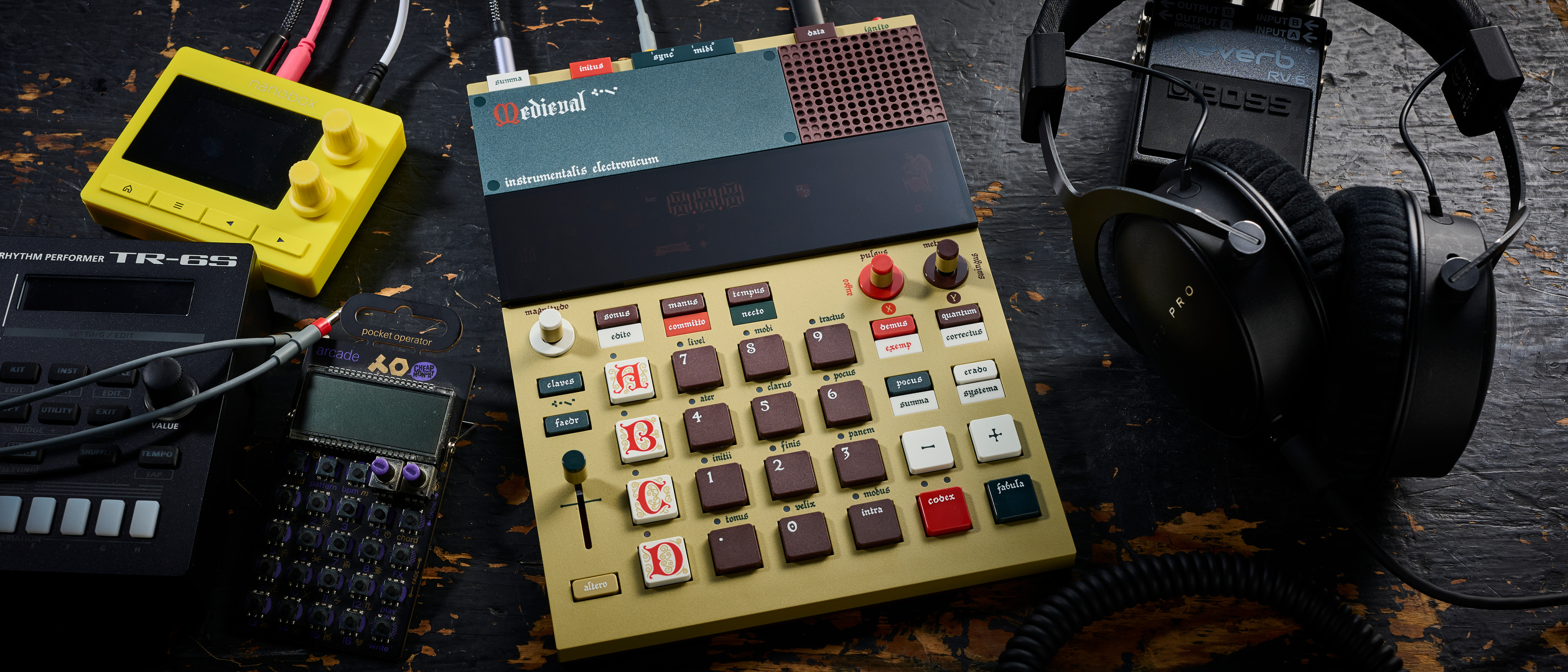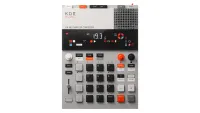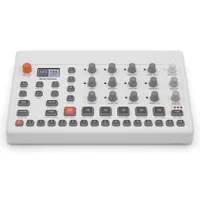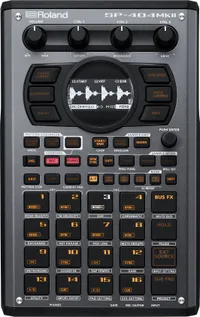MusicRadar Verdict
A bubbling cauldron full of ancient sounds, but confusing to learn and lacking in space for user samples. Will it stand the test of time or be consigned to the history books forever more?
Pros
- +
Collectors' edition with custom artwork.
- +
Loaded with hundreds of medieval inspired sounds.
- +
Redesigned punch-in ‘pocus’ effects.
Cons
- -
Only 32MB of user sample memory.
- -
Confusing learning curve due to controls labelling.
- -
Stock sounds cannot be deleted.
MusicRadar's got your back
What is it?
Swedish hardware manufacturer Teenage Engineering has made a name for itself in recent years with its innovative electronic instruments, iconic design style, and occasionally, a touch of controversy. Their latest offering into the sampler market, the EP-1320 Medieval fits all of the above, billed as “the ultimate, and only, medieval beat machine”.
The EP-1320 Medieval is essentially an updated edition of 2023’s EP-133 K.O. II sampler. As we've already reviewed this device, we won’t rehash too many of the similarities between the models, instead focusing on what new features this ancient-inspired instrument has to offer.
At first glance, the EP-1320 looks and feels great – sharing the same form factor, controls and connectivity as the K.O. II, but with an updated colour scheme and artwork. The build quality is sturdy and robust, yet thin, lightweight, and portable. Portability is a key factor here, as the unit can be battery-powered, with the built-in speaker and microphone allowing for easy use without any extra hardware or cabling. For an additional cost, Teenage Engineering even offers a quilted carry bag, so you can really look the part at the local village fayre.
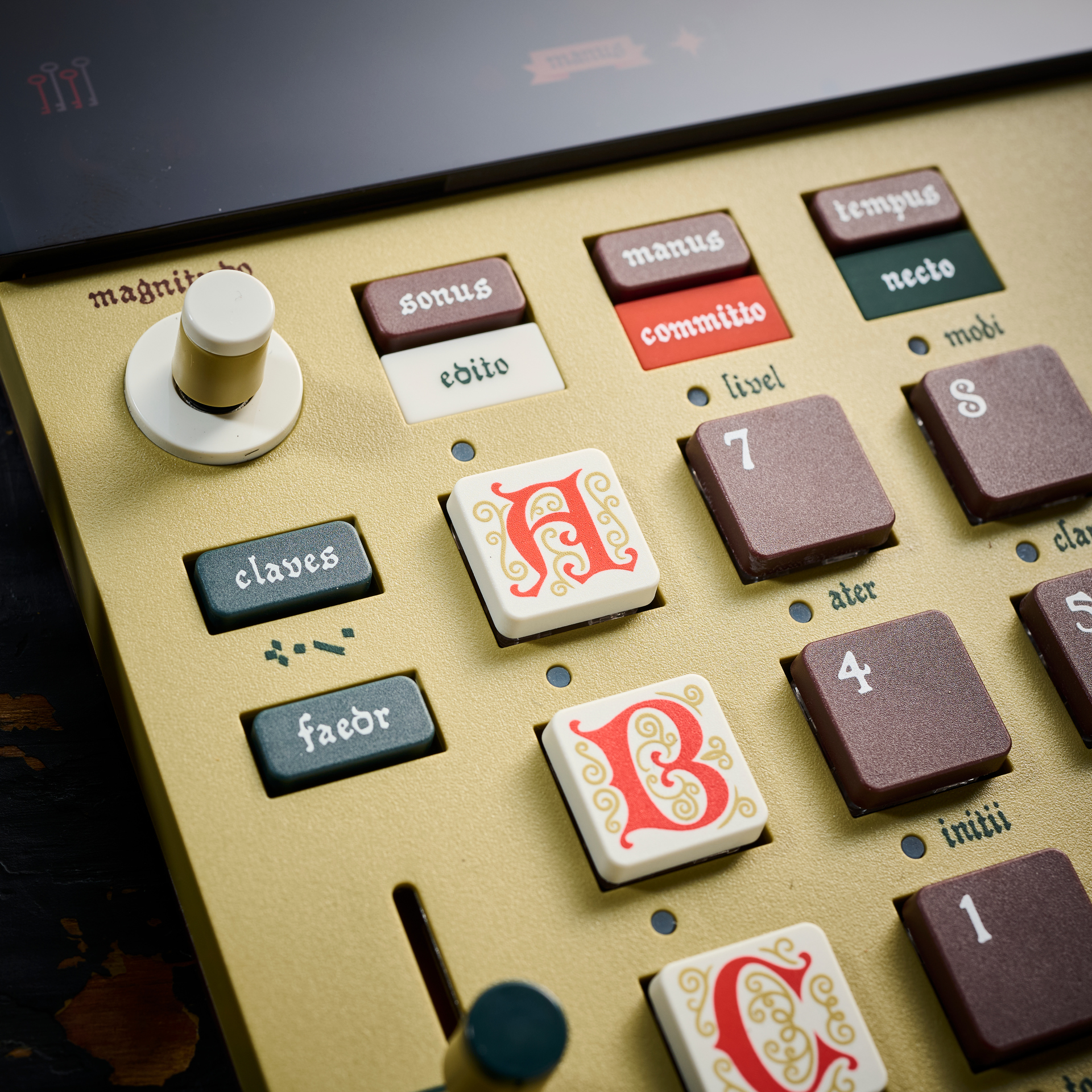
Performance
When playing around with any new piece of hardware, there is always a learning curve to be had to understand the device’s idiosyncrasies and hidden features. The EP-1320’s naming conventions for the controls takes this to new levels of indecipherability, leaving users unsure whether to reach for an instruction manual or a Latin dictionary.
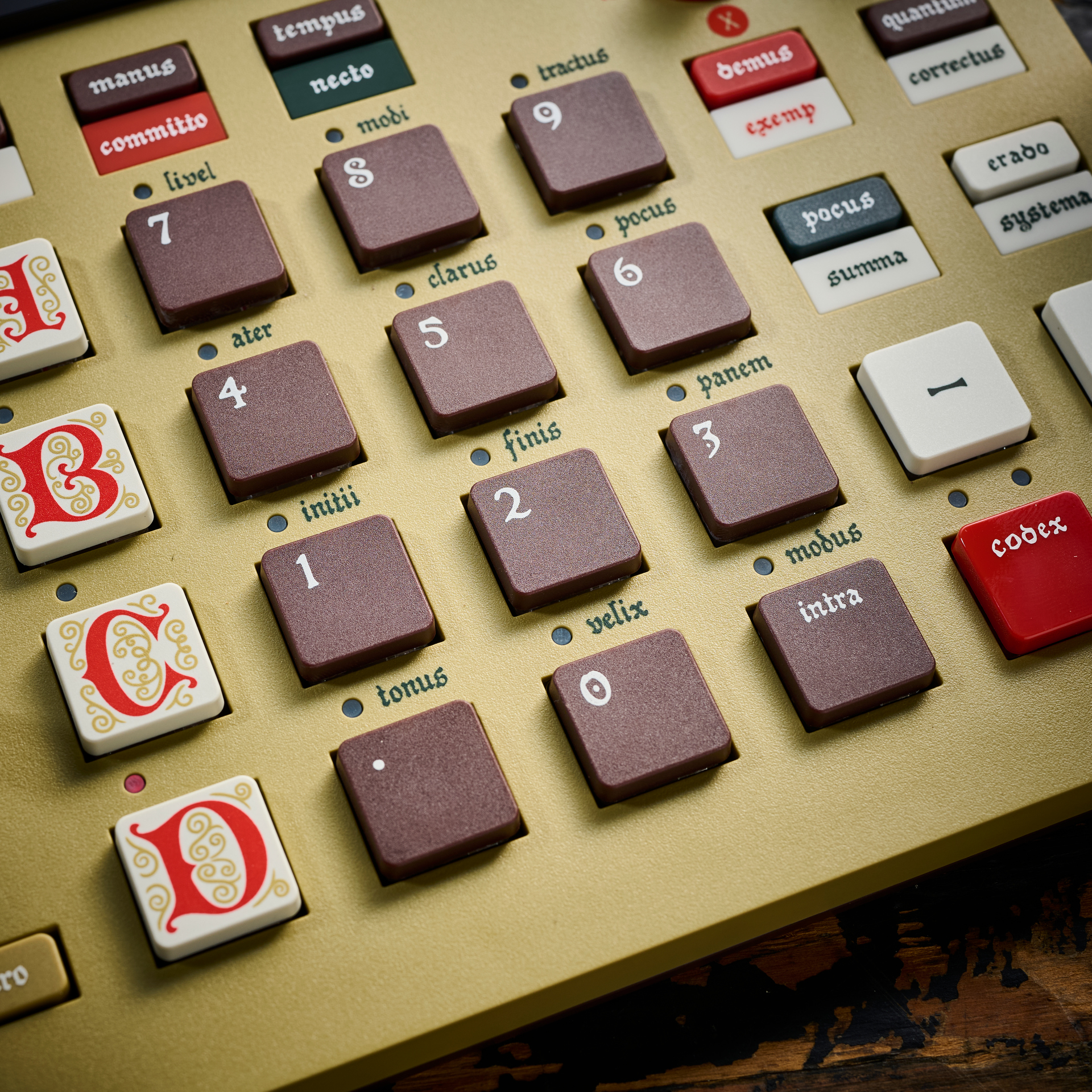
Despite sharing many of the same functions as its predecessor, familiar controls such as ‘volume’, ‘play’, and ‘FX’ have now been replaced by ‘magnitudo’, ‘fabula’, and ‘pocus’. This choice of faux-Latin labelling is not the most user-friendly idea that Teenage Engineering has come up with, however, it certainly adds another layer of mystery and intrigue to the device, creating a sense of deciphering an ancient artefact from a bygone time. An easy workaround to this issue is to simply consult the manual.
Alongside the printed graphics on the instrument’s shell, the EP-1320 also features an array of icons on the LED screen, intended to be visual cues to represent level metering and the status of the device’s various functions. Again, these prove to be equally as confusing as they are amusing.
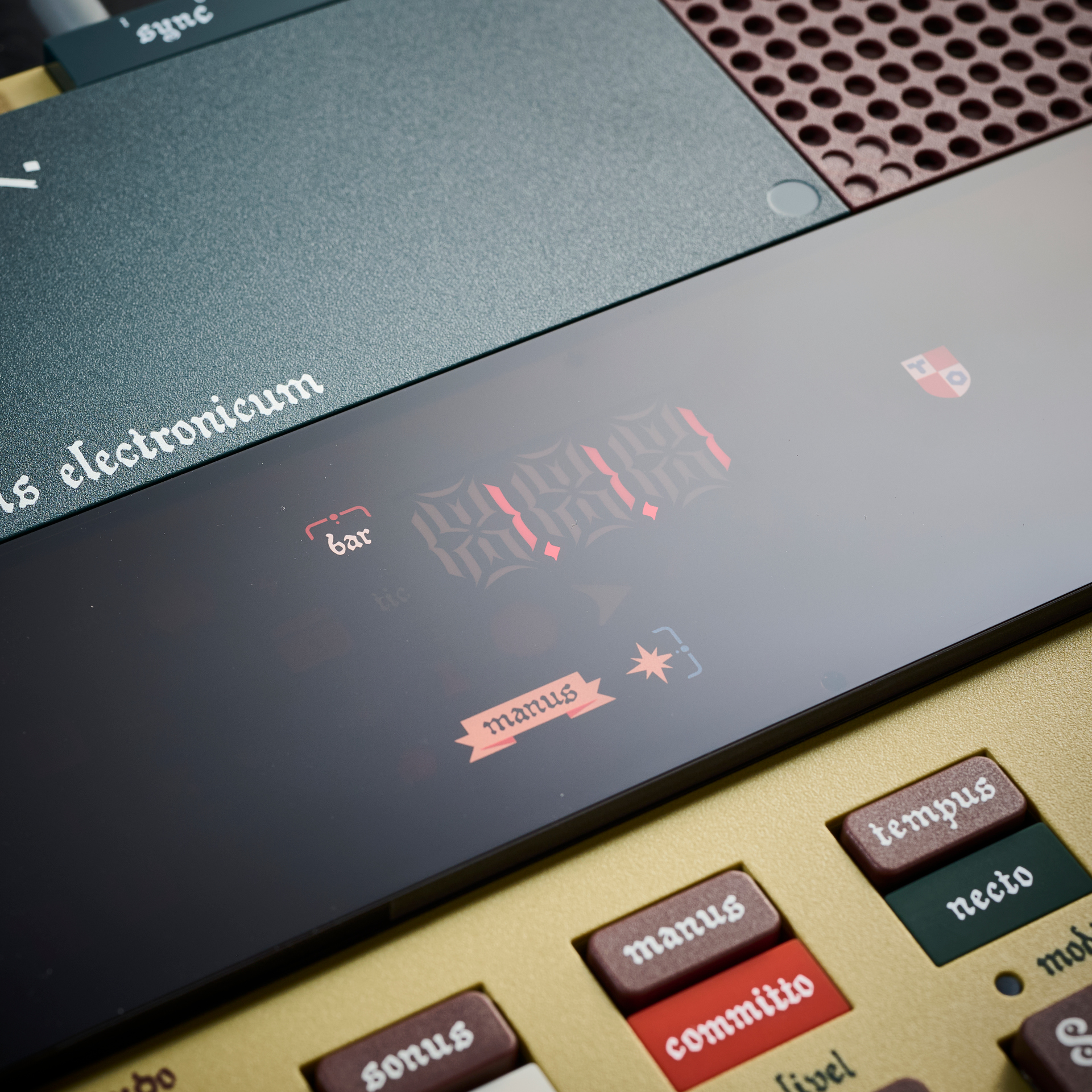
The EP-1320 Medieval comes with 128MB memory, double that of its older cousin. However, a precious 96MB of this is used up by the stock sounds that cannot be deleted, leaving only a meagre 32MB for user samples. With the original K.O. II’s 64MB of memory already feeling somewhat limited compared to other similar products, this lack of space certainly comes across as a downgrade for users who are wanting to record and edit their own samples. That being said, it seems quite clear that this device is designed to occupy a more specialist, niche area of the market, offering a well-curated selection of sounds that are designed to work cohesively together.
Want all the hottest music and gear news, reviews, deals, features and more, direct to your inbox? Sign up here.
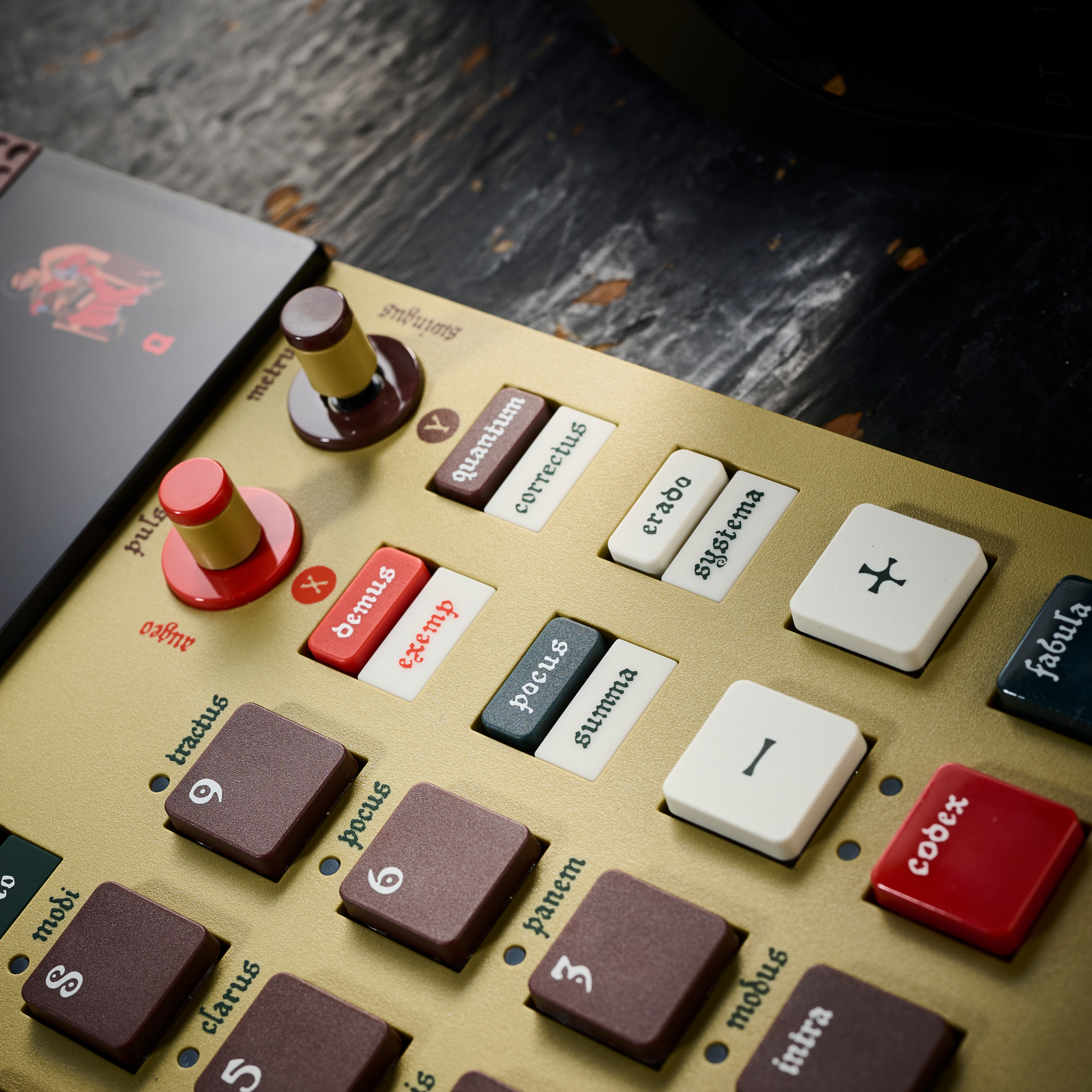
The preinstalled sounds are an eclectic mix of horns, flutes, bowed and plucked strings, Gregorian chants, drums and percussion, as well as a wide array of medieval inspired foley sounds such as horses, clashing swords, cackling witches and rowdy peasants. The samples are high quality, and with the device’s 12 mono/six stereo voice polyphony, it’s easy to create rich textures very quickly. The EP-1320 comes with nine demo tracks, ranging from grandiose medieval fanfares, to clanging 21st century techno stompers, which can be remixed through the unit’s onboard punch-in effects.
The updated effects on the EP-1320 consist of a dungeon echo, torture chamber reverb, distortion, bardic ensemble, filter, compressor, and a dimension expander – which can all be assigned to individual pads, the main mix, or to a live input. Despite having different tonal qualities to the effects on the K.O. II, it’s impossible to say whether one version sounds objectively better than the other, and in the end it comes down to personal preference.
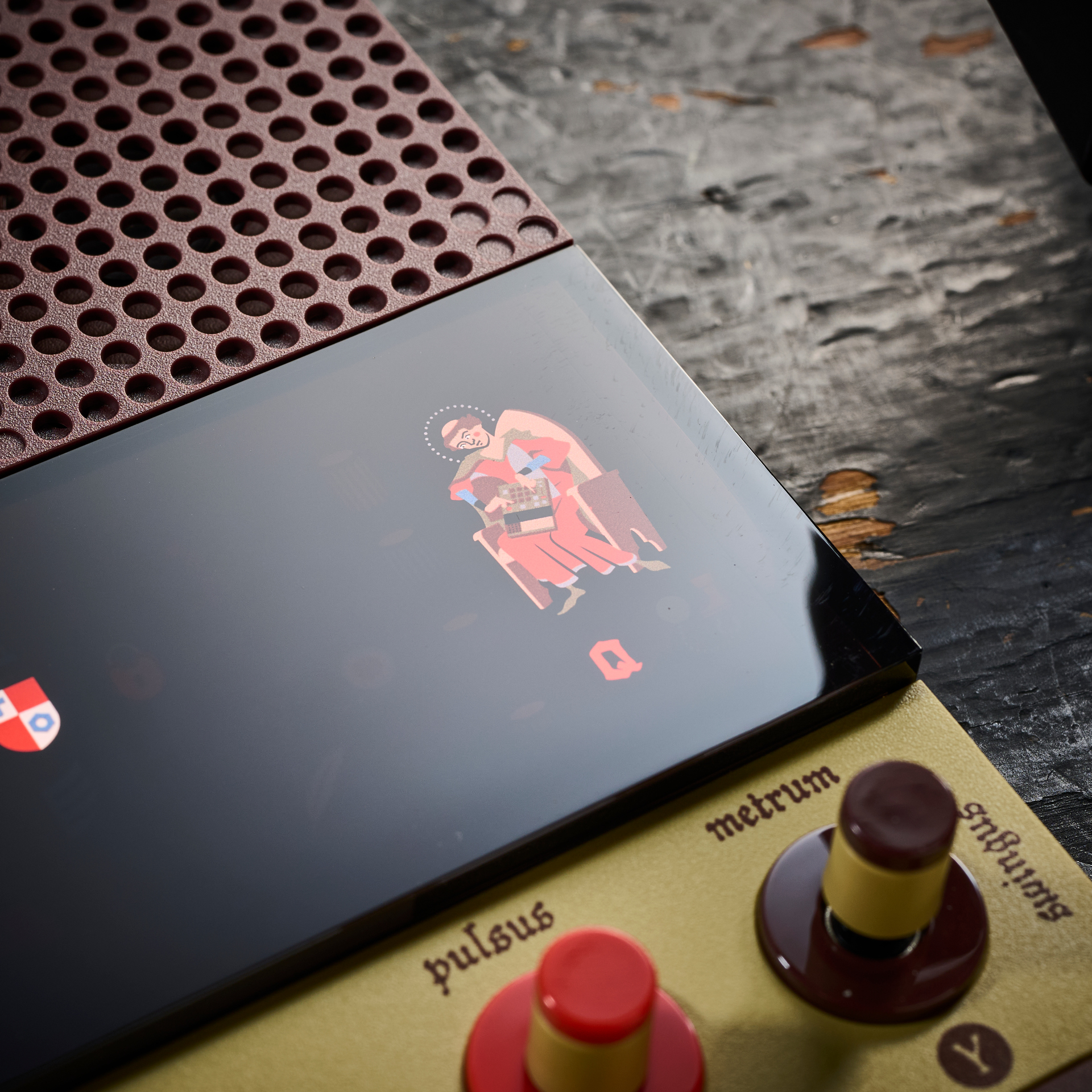
Verdict
All in all, there’s no doubting that the EP-1320 Medieval is heaps of fun, and it’s always great to see innovation within a market that can sometimes appear to be running out of original ideas. It looks great, it feels great and, if you’re into that sort of thing, it sounds great as well.
However, for users looking to sample their own sounds, it’s clear that the EP-133 K.O. II is still the knockout champ, offering double the user memory at the same price point. But for the dungeonsynth aficionado, D&D roleplayer, or Bardcore-ious, the EP-1320 Medieval is surely the holy grail.
Hands-on demos
teenage engineering
Alternatives
The big brother, the knockout champ.
Read the full Teenage Engineering EP-133 K.O.II review
Affordable six track sample player with tactile controls, inbuilt effects, and 300 samples supplied by Splice.
Read the full Elektron Model:Samples review
A modern classic, with 16GB memory, OLED screen and 17 velocity sensitive pads.
Read the full Roland SP-404 MKII review
Specifications
Price | £299/$299 |
Key features | Built-in mic and speaker 6 stereo voices / 12 mono 128MB memory including 96MB ROM sounds and 32MB user sample memory 9 user projects 7 built-in pocus and 12 punch-in pocus Pressure sensitive keys and multi-functional fader Sampling frequency: 46 kHz / 16-bit 1x stereo in/out, sync in/out, midi in/out and usb-c Powered by 4x AAA batteries, or via usb-c |
Dimensions | 240 x 176 x 16 mm |
Contact |
You must confirm your public display name before commenting
Please logout and then login again, you will then be prompted to enter your display name.
